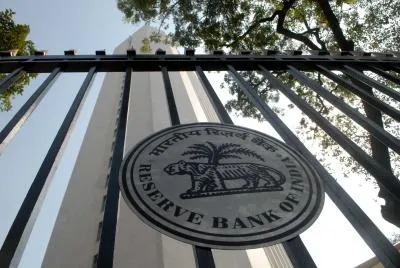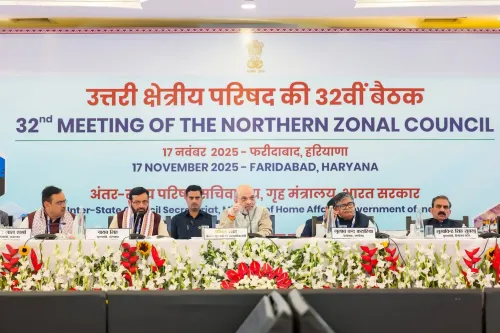Is RBI's Decision to Hold Repo Rate at 5.5% Wise Amid Global Uncertainties?

Synopsis
Key Takeaways
- RBI maintains repo rate at 5.5%.
- Current global economic uncertainties have influenced this decision.
- Projected inflation stands at 3.7%.
- Economic growth is stable at 6.5%.
- GST is a structural reform, not a direct factor in interest rates.
New Delhi, Oct 1 (NationPress) The Reserve Bank of India’s (RBI) choice to keep the repo rate steady at 5.5 percent is considered wise and sensible amid the ongoing global economic turbulence, as stated by economist Dr. Manoranjan Sharma on Wednesday.
In an interview with IANS, Dr. Sharma mentioned that the majority of economists had foreseen this stability in the October monetary policy, especially in light of the persistent Israel-Hamas conflict in the Middle East, the ongoing Russia-Ukraine war, and the ramifications of US tariffs.
He remarked, “Crude oil prices are fluctuating, and the country’s growth rate is at 6.5 percent. In this context, the RBI’s decision appears well-thought-out.”
Dr. Sharma further emphasized that the RBI’s monetary policy choices are not directly tied to GST. “Interest rates are determined by the central bank based on broader economic circumstances. GST represents a structural reform that is poised to enhance consumption and foster growth,” he added.
The economist anticipates that India’s inflation will stabilize around 3.7 percent this financial year, a figure he considers manageable given India's status as the world's fastest-growing economy.
According to the policy announcement, the RBI has opted to keep the repo rate unchanged at 5.50 percent and has maintained its monetary policy stance as “neutral.” The Standing Deposit Facility (SDF) continues to remain at 5.25 percent, while the Marginal Standing Facility (MSF) is at 5.75 percent.
RBI Governor Sanjay Malhotra, during his policy address, underscored that the economy is showing strong performance, with inflation decreasing due to favorable monsoon conditions. He also noted that GST rate reductions have bolstered consumption and accelerated growth.
This marks the second consecutive occasion that the RBI has opted to keep the repo rate steady, following a similar decision in the August MPC meeting. Since the start of 2025, the central bank has, however, decreased the repo rate by a total of 1 percentage point - with cuts of 25 basis points each in February and April, followed by a larger 50 basis points cut in June.









